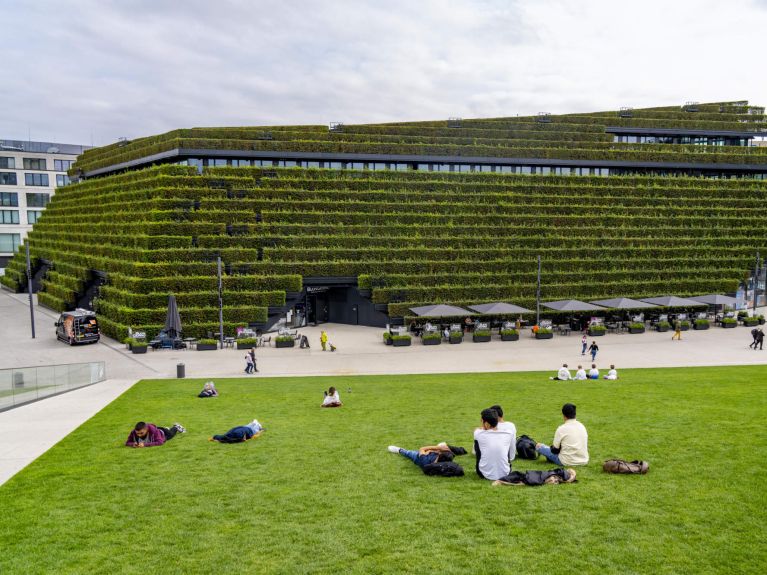Sponge cities defy climate change
Water shortages during hot summers are forcing more and more cities to find innovative answers, such as the principle of the sponge.

As part of efforts to beat water shortages and boost climate resilience, many cities are modelling themselves on sponges by storing rain water during periods of heavy rainfall. This approach prevents floods or limits their impact, and provides more water for cooling and irrigation during the summer months.
In global terms, sponge cities are still relatively rare, but some cities in Germany have set themselves the challenge, including Berlin.There are three stages to making sponge cities a reality: in short, green, blue and grey infrastructure.
Combining green, blue and grey infrastructure
Green infrastructure includes parks, green facades like the Kö-Bogen-2 building in Düsseldorf, and green roofs, which are growing in popularity in Germany. In 2021, for example, almost 10% of new-builds in Germany had green roofs. Munich is implementing a new sponge city philosophy which combines green spaces, tree plantations, large planting pits for urban trees, and green roofs.
Blue infrastructure deals with water, from infiltration trenches and artificial lakes to wetlands with flood meadows and water retention ponds. The Pfaffenhofen eco-neighbourhood in South Germany has shown that it is possible to build neighbourhoods where water is able to drain away, a process known in German as “unsealing”. Now rainwater in Pfaffenhofen drains from street gutters into cisterns and infiltration trenches or into the renatured River Ilm.
Grey infrastructure concerns buildings such as soakaways, cisterns and water-permeable paving such as open-joint bricks. New build developments in Berlin must now ensure that most water is disposed of through seepage, storage or evaporation. The Adlershof technology park and residential district, for example, does not discharge water into the sewer system. Instead, water is channelled into infiltration areas. Water can drain away into paths and pavements, too.
It is true that the sponge city concept requires a new mindset and cooperation between different disciplines, but this simple route to climate resilience is becoming increasingly popular. Ultimately sponge cities offer many benefits to people both in times of drought and during periods of flooding.
